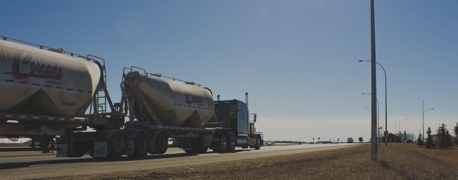CDL Drivers—Are You Taking Your Pre-Trip Inspections Seriously?

Every year, tragic accidents involving commercial vehicles occur on our roads and highways. These accidents often result in loss of life and serious injuries.
Investigation sometimes reveals that these collisions might have been prevented had the driver conducted a thorough pre-trip inspection. For example, there was a crash in Wisconsin where a bus carrying a high school marching band drove into a tractor-trailer, resulting in the loss of five lives. Investigation found that the bus had faulty brakes, which the bus driver would have discovered if he had done a routine inspection.
It’s clear how the consequences of neglecting pre-trip inspections can be devastating. In this context, it is crucial to emphasize the importance of pre-trip inspections for ensuring the safety of all road users and saving lives.
Explaining Pre-Trip Inspections
Given the size and power of buses, tractor-trailers, tankers, and other large vehicles, federal regulations require them to undergo daily maintenance checks. That’s what pre-trip inspections are.
A pre-trip inspection is a mandatory safety check conducted on a commercial vehicle at the beginning of each workday. According to 49 CFR § 396.13, pre-trip inspections are required for every federally regulated vehicle and must include acknowledging any defects mentioned on the previous shift’s Driver Vehicle Inspection Report (DVIR), or post-trip inspection.
The scope of a pre-trip inspection, as outlined in 49 CFR § 392.7(a), covers a range of vehicle components, including:
- Service brakes
- Parking brake
- Steering mechanism
- Lighting devices and reflectors
- Tires
- Horn
- Windshield wipers
- Rear-view mirrors
- Coupling devices
- Wheels and rims
- Emergency equipment
Drivers must ensure that all of these parts and accessories are in good working order before every shift. Thorough pre-trip inspections can take up to 30 minutes, but an experienced trucker in a hurry might complete a more cursory inspection in half that time. However, if the inspection takes less than five minutes, it is likely not thorough enough to be reliable.
By conducting these inspections daily and ensuring that all necessary components are in working order, drivers can prevent accidents and ensure that they and others on the road arrive safely at their destinations.
Who Is Required to Do Pre-Trip Inspections?
Pre-trip inspections are required by law under the Federal Motor Carrier Safety Regulations (FMCSRs). These regulations apply to all drivers of vehicles that meet certain conditions. If the vehicle weighs 10,001 pounds or more, transports eight or more passengers for hire, or transports 15 or more passengers, or is used to transport hazardous material, then pre-trip inspections are mandatory.
One common question is whether short-haul drivers, such as those driving local FedEx and UPS trucks, are required to complete pre-trip inspections. It’s important to note that because these trucks are medium-duty box trucks, they typically weigh in excess of 10,000 pounds, making pre-trip inspections mandatory for these vehicles as well.
Logging Pre-Trip Inspections
Written records of pre-trip inspections are not required by law, but there are indirect ways pre-trip inspections are logged. For instance, the time spent on these inspections can be inferred from the Electronic Logging Device (ELD) used by commercial drivers. Additionally, drivers are required to acknowledge any defects found in the previous shift’s post-trip inspection and confirm that they have been resolved during the pre-trip inspection. This acknowledgment is an indirect record of pre-trip inspections.
However, if a driver discovers a defect during the pre-trip inspection, they cannot begin work until the issue is resolved. In such cases, the driver should report the issue to the carrier’s maintenance department or, if it’s their rig, arrange for repairs themselves.
While pre-trip inspection records aren’t mandated, drivers are required to keep a written record of their post-trip inspection (DVIR). However, the law says if no defects are found during the post-trip inspection, a written record is not necessary. Some safety advocates consider this stipulation a bit of a loophole. If drivers are only required to file post-trip inspections when there’s a defect, then the inspection records are essentially based on the honor system.
Can Drivers Ever Skip the Pre-Trip Inspection?
A driver cannot skip the pre-trip inspection under any circumstances—and why would they? It’s in everyone’s interests to make sure a truck’s basic components are working correctly. When an operator gets behind the wheel of a rig, they’re taking responsibility for the state of the truck.
Drivers risk fines from DOT for driving unsafe vehicles, but more importantly, pre-trip inspections ensure the safety of the operator and other people on the road. There is nothing practical or legal about keeping drivers on the road with a truck that has unsafe defects, as it risks their lives and the lives of others.
So what happens if a driver skips the pre-trip inspection and gets in an accident?
If a driver neglects the pre-trip inspection and there is an accident, they could be held liable for any damages caused if the cause of the accident was a defect that the driver knew or should have known about. This would be in addition to any liability held by the carrier and their insurance company. While a driver’s actions might make them liable for an accident regardless, a record of neglecting their own vehicle would certainly not help their case.
Pre-Trip Inspections Are the Carrier’s Responsibility
People who drive a big rig or a tanker faces uncountable dangers on the road. The rigors of the road, the unforgiving schedule, and the pay-by-mile wages they live on all put enormous pressure on them to deliver quickly and often. Taking 30 minutes every morning to do a safe, thorough inspection is vital for their (and eveyone’s) safety, but it won’t matter what the law says if employers are continuously pressuring truckers to go as far and as fast as possible.
If a trucker gets into an accident because they failed to thorough check their rig for serious defects, that’s not just on the driver—it’s on the carrier too.


